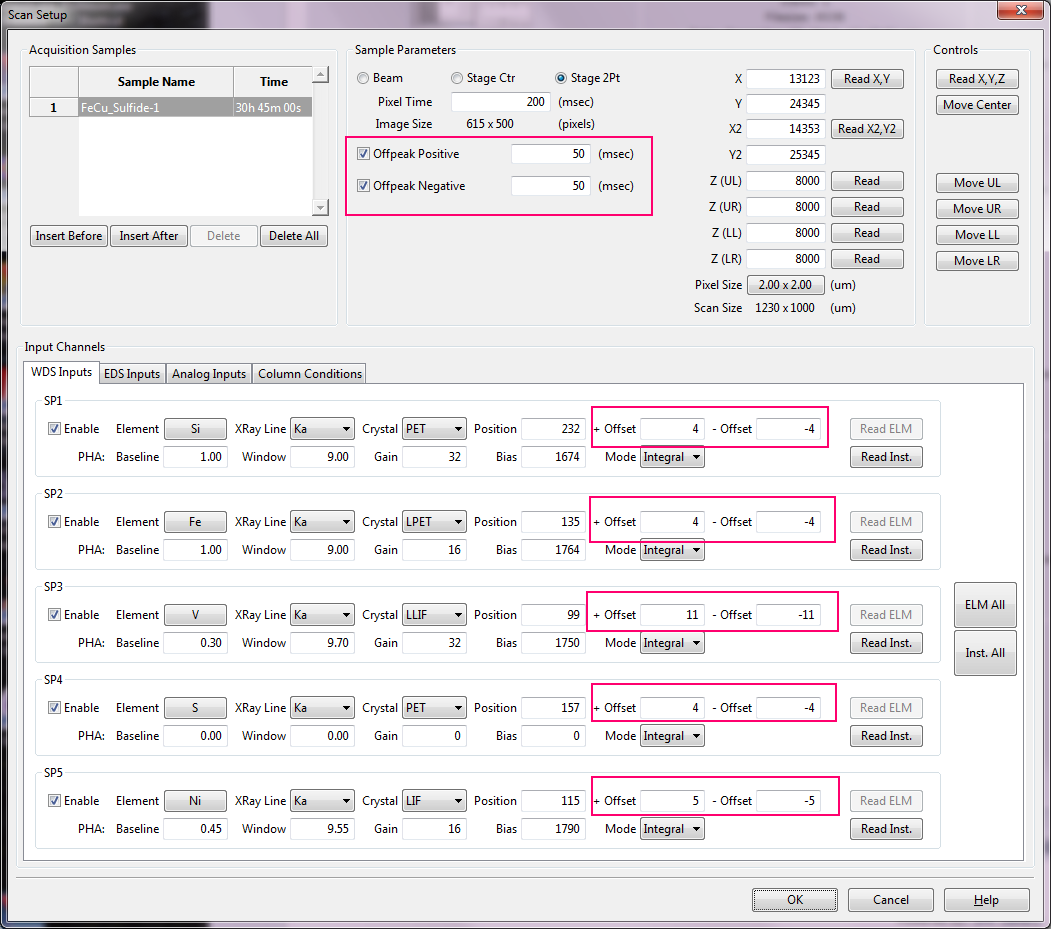Unfortunately I have no idea about Jeol's EPMA, our facilities have only Jeol SEM, and stage is not automated/connected with software. But believe me your called "Anti-Cartesian" stage is not so bad. I had seen instruments with normal polarity for X but reverse for Y (some LA-ICP instruments); some reverse polarity is used on some of optical microscopes.
Yes, JEOL's EPMA is "anti-cartesian". I had also heard from Nick Botto at UC Davis that some LA-ICPMS stages are also "half-cartesian" with as you say, an inverted Y axis. But we now can handle these situations nicely in PictureSnapApp, for moving images and stage coordinates between instruments with different stages:
http://probesoftware.com/smf/index.php?topic=1020.msg6937#msg6937By the way, PictureSnapApp is a free app in the "demo" and "text input" modes. In "text input" mode one has to enter the stage calibrations using the keyboard, but it works for sample navigation on instruments that we don't yet have a stage interface for (or one doesn't want to "cough up" the US$499 for the hardware interface driver). PictureSnapApp can be downloaded here:
http://probesoftware.com/download/PictureSnapApp.msiVersion checking and error handling are the fundamentals in programming which uses some IO (like 99.99% of software/firmware). Without versions of formats we would have no progress, we would have to stick with single format which normally after some heavy use shows its weak sides, and needs some improvement. Version of the files makes possible for older/newer (less complete/more complete in features) files to be opened with older/newer software.
Absolutely. Version checking is essential. I bump my software version probably once a month! Usually only when I have to add a new parameter to the database, or when I make a big change to the code. As for error trapping, yes also. I would much rather trap an error than have the software lock up. The main challenge is when to bother the user and when to deal with the issue silently...
About text files... no bad feelings, but Cameca's export to ascii simply sucks. It is super slow, outputs very limited information... thus it is not the coincidence that my fingers got itchy for reverse engineering Cameca's binary formats (impDat sucks too, but a bit less). What is so bad about ascii impDat output? everything. It spews separate files per signal and dataset, it does not fill in information about off-peak position if bkgd mapping is allso present. In peaksight 6.1 there were even no export option into ascii. Oh and mind that peak position given in metadata is after applying offset implied by Xtal verification.
So answering to the last question: yes the PeakSigh (mind no 't') is able to acquire single background map (only single off-peak per line, + and - bkgd is imposible). How it is converted into "low peak" or bkgd directly under peak is not known to me, there is also no options for linear (no slope) or exponential correction. When exported into ascii, both peak and bkgd txt files contain the exactly same metadata, The only way to know that we are looking into bkgd map and not into peak map is due to file name of txt file.
PeakSigh... ha, ha.
On my question on off-peak maps, sigh. You confirm my suspicions about the PeakSight ASCII export and the lack of noting the background positions in the meta data. OK, so I guess the user could denote that the exported maps are off-peak maps in the filename by some agreed on naming convention. But then the user would have to remember to include that identifying string in the sample/filename. Or perhaps the app should just bother them at the time they run the conversion to our mapping format (.PrbImg), and ask, "are these maps on, high or low off-peak maps?"
Regarding the Veri spectro command, we always avoid that command in the lab. That way we know the absolute spectro positions and also can observe when things are changing mechanically.
How efficient is mapping functionality in PfE? can you do multi area dataset?
The mapping functions are in our Probe Image software. It utilizes the same firmware calls as PeakSight, but it does automatically handle acquisition of off-peak maps:

This is an example from a JEOL instrument, but the cool thing is that the software automatically acquires the off-peak maps specified (based on the off-peak positions from Probe for EPMA) after the on-peak acquisition. Of course most people nowadays just acquire on-peak maps and utilize our MAN correction which gives better sensitivity and in roughly half the acquisition time:
http://probesoftware.com/smf/index.php?topic=307.0Question: do you know how backward compatible is Cameca's ASCII export format for the .impDAT files? I mean, has Cameca changed the ASCII export format with different versions of PeakSight? I don't know which version of PeakSight Philipp Poeml used to create these ASCII files that I am working with, but I wonder if we will be able to read older and newer PeakSight ACSII export files?